What do you do in an emergency situation when no doctor is available? Unfortunately, we sometimes find ourselves in these situations. The problem compounds under survival conditions with no 911 calls and no emergency room nearby. When the day comes, you may need this first-aid wisdom from 100 years ago.

In the Mid-19th century, tobacco companies began putting helpful cards included in each pack of cigarettes. This set of cards taught helpful first aid tips. Designed to encourage brand loyalty, the cards here have a picture on one side and the first-aid tip on the reverse. Many of these tips from a 100 years ago are still valuable today, especially in emergency situations.
14 Lost Emergency Care Tips From 100 Years Ago
#1. Strapping a Wound:
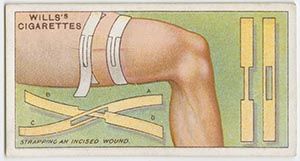 Cut two pieces of bandage tape long enough to reach several inches past the wound on each side.
Cut two pieces of bandage tape long enough to reach several inches past the wound on each side.- On one piece of tape, cut a rectangular hole in the center, one-third of the width of the tape and two inches long.
- At the center of the other piece of tape, cut away one third of the width in a two-inch strip on each side, leaving a two inch strip in the center that is only one-third of the total width.
- Thread the second piece of tape through the hole in the first, forming a x from the tape.
- Fix the bottom leg of the x on each side to the skin adjacent to the wound.
- Grasp the top sections of tape and pull tightly, drawing the skin together. Secure the upper pieces of tape over the lower section, holding the skin tightly together.
Related: 26 Practical Survival Uses for Duct Tape
#2. Tourniquet – To stop bleeding from an artery below the middle of the arm:
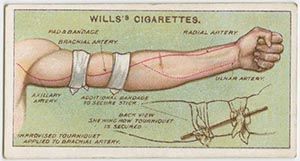 Raise the arm from the side. Make a pad from a handkerchief, bandage, or clean cloth and apply it to the artery.
Raise the arm from the side. Make a pad from a handkerchief, bandage, or clean cloth and apply it to the artery.- Wrap gauze or fabric around the arm with the center covering the pad. Tie the bandage together in a knot on the outside of the arm.
- Place a pencil or stick under the knot and twist to tighten the bandage, until the bleeding stops.
- Secure the pencil or stick in position by wrapping another bandage above or below the tourniquet and tying it in position.
Related: 24 Lost Survival Tips from 100 Years Ago with Illustrations
#3. Compression of the Artery – To stop bleeding anywhere below the middle of the arm by compression with your fingers:
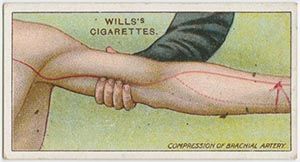 Raise the arm level with the shoulder. Turn the hand so that the palm faces up.
Raise the arm level with the shoulder. Turn the hand so that the palm faces up.- Grab the upper arm with the thumb in front and the fingers behind the arm and across the brachial artery located on the upper inside of the arm.
- Put pressure on the arm and twist your hand so that the fingers and artery are pushed backwards and bleeding stops.
- Hold the pressure until medical help arrives.
Related: 23 Medicinal Plants the Native Americans Used on a Daily Basis
#4. Fracture of the Humerus – Apply a splint to a fracture of the humerus (the bone in the upper arm) in the following way:
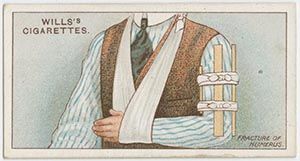 Bend the arm at the elbow, forming a right angle.
Bend the arm at the elbow, forming a right angle.- Apply four splints, equally spaced to the front, back, and each side of the upper arm. The front, back, and outer splint should reach from shoulder to elbow. The splint on the inside, closest to the body, should not put pressure on the bend of the elbow.
- Hold the splints in place with bandages above and below the break.
- Support the forearm with a narrow sling passing around the neck and under the forearm.
#5. Fracture of the Forearm – To apply splints for a fracture of either or both bones of the forearm:
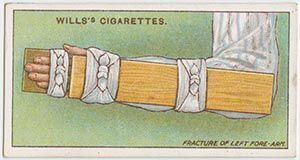 Bend the arm at the elbow to form a right angle, with the palm facing the body and the thumb pointing up.
Bend the arm at the elbow to form a right angle, with the palm facing the body and the thumb pointing up.- Apply two splints: the first on the inside of the arm, reaching from the elbow to just past the finger tips. The second on top of the arm from elbow to the knuckles. If clothing has been removed, place some padding between the arm and the splint.
- Secure the splints with bandages just below the elbow and at the wrist.
- Support the forearm with a large arm-sling.
#6. Improvised stretcher – To make an improvised stretcher, you will need two long poles, 6 to 7 feet in length, two short sticks – approximately 2.5 feet long, a rope, and twine:
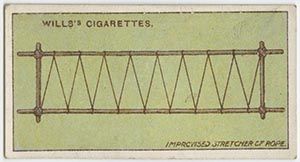 Lay the long poles on the ground parallel to each other and approximately 2 feet apart. Place a stick across either end, approximately 4 inches from either end.
Lay the long poles on the ground parallel to each other and approximately 2 feet apart. Place a stick across either end, approximately 4 inches from either end.- Tie the sticks to the poles at each intersection, forming a rectangle with handles.
- Tie a rope at one corner and stretch it back and forth across the stretcher, moving back and forth and down the length of the poles. Tie the rope to the corner diagonal to the starting point.
Related: Emergency Care For Gunshot Wounds
#7. Improvised Stretcher – Form a stretcher from two poles and two to three jackets:
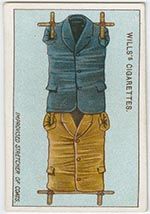 Turn the sleeves of the jackets inside out, leaving the sleeves inside the jacket.
Turn the sleeves of the jackets inside out, leaving the sleeves inside the jacket.- Button or zip the jackets closed. Lay them out so that the tail of one jacket overlaps the neck of the next.
- Push the poles through the sleeves inside the jackets.
- Carry the stretcher with four people, each lifting one end of a pole. If only two carriers are available, brace the poles on either end with cross-bars.
#8. Shot in Legs – When the leg is “peppered” by shot from a shot gun, most of the pain will subside quickly. Follow this procedure:
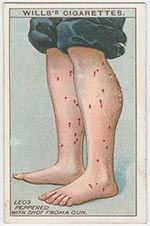 Prevent the injured person from walking if the pellets are buried beneath the skin around the knee or ankle.
Prevent the injured person from walking if the pellets are buried beneath the skin around the knee or ankle.- Put the patient to bed and wrap the leg in wet towels. Replace the wet towels every four hours. Do not attempt to extract the pellets.
- If joints swell, consult a doctor.
Related: Best Natural First Aid: Stops Bleeding In 10 Seconds!
#9. To Extract A Fish-Hook. When the barb of a fish-hook is buried beneath the skin, do not try to remove it by pulling it backwards along the entry path. Instead:
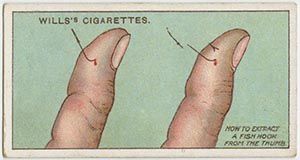 Cut the thread binding the shaft to the hook. If the hook has an eye, cut the hook below the eye with wire-cutting pliers.
Cut the thread binding the shaft to the hook. If the hook has an eye, cut the hook below the eye with wire-cutting pliers.- Clean the shaft of the hook and apply Vaseline or lard to it.
- Push the shaft of the hook upwards until the barb protrudes through the skin.
- Hold the hook in pliers by the barbed end and pull the shaft through.
#10. Sprained Ankle – When an ankle or lower leg is injured, help the patient to a place of rest as follows:
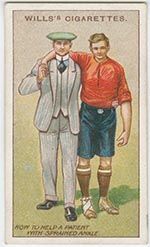 Stand next to the patient on the same side as the injured limb.
Stand next to the patient on the same side as the injured limb.- Pass your arm, on that side, around the patient’s waist. Bring the patient’s arm nearest you around your neck and grab his wrist with your other hand.
- If the injury is to the ankle, bend the injured leg at the knee and hop on the good leg.
Related: The Hidden Truth About Taking Expired Medications
#11. Four-Handed Seat – To for a four-handed seat:
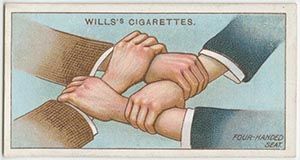 The two bearers face each other. Each grabs his own left wrist securely with his right hand.
The two bearers face each other. Each grabs his own left wrist securely with his right hand.- The bearers come together. The person on the left grabs the right wrist of the person on the right. The person on the right does the same, grabbing the free wrist of his partner, forming an open square.
- The patient sits on the square, placing his arms around the necks of his bearers’.
#12. Burns on the Face – When the face is burned by heat or strong acid, make a mask:
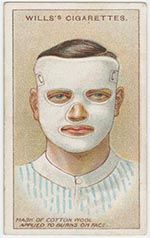 Cut two pieces of linen to the shape of the face, making holes for the eyes, nose and mouth.
Cut two pieces of linen to the shape of the face, making holes for the eyes, nose and mouth.- Layer cotton wool, two inches thick, between the linen, leaving holes for the eyes, nose, and mouth.
- Gently apply oil, Vaseline, or other burn ointment to the surface of the face.
- Place the mask on the face, holding it in place by strips of bandage or tape sewn or pinned to the sides of the mask and tied or pinned behind the head.
#13. Foreign Body in the Ear – Follow the most appropriate method to remove a foreign body:
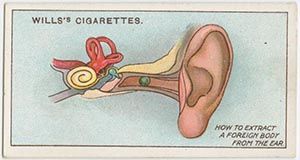 Float an insect out by pouring olive oil from a spoon into the ear passage. Remove the insect, then turn the head over to drain the oil.
Float an insect out by pouring olive oil from a spoon into the ear passage. Remove the insect, then turn the head over to drain the oil.- If it is possible, grasp a protruding part of the object with forceps, tweezers, etc, and remove it.
- A piece of pencil, bead, or pea pushed deep into the ear must be removed by a doctor.
- Prevent a child from putting finger into the ear by restraining his hands until the foreign body is removed.
#14. The Fireman’s Lift:
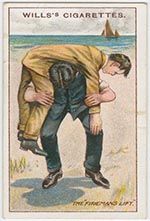 Turn the unconscious person face down.
Turn the unconscious person face down.- Kneel close to his head and, from the front, pass your hands beneath his armpits.
- Lift the patient up towards you, supporting him on your knee.
- Lock your hands around his waist and stand up, lifting the patient with you.
- Hold one of his wrists up and pass your other arm between his legs. He should fall across your shoulders.
- Stand up, balancing the body across both shoulders.
- Grasp the patient’s wrist tightly with the hand that passed between his legs.
- Carry the patient in this position, using the free hand to stabilize yourself or grab a support as needed.
A MEDICINAL PLANT MAP THAT SHOULD BE IN YOUR SURVIVAL KIT (Free 83 pages book download that covers all 50 states)
Source: askaprepper.com
Learn how to make the most powerful natural painkiller from wild lettuce. Watch the video below:
Would you like to know how the first settlers healed themselves and what plants they used to cure everything?
Then you really need this amazing book. It is called The Lost Ways and it contains all the knowledge of our forefathers.
 Here’s just a glimpse of what you’ll find in The Lost Ways:
Here’s just a glimpse of what you’ll find in The Lost Ways:
From Ruff Simons, an old west history expert and former deputy, you’ll learn the techniques and methods used by the wise sheriffs from the frontiers to defend an entire village despite being outnumbered and outgunned by gangs of robbers and bandits, and how you can use their wisdom to defend your home against looters when you’ll be surrounded.
Native American ERIK BAINBRIDGE – who took part in the reconstruction of the native village of Kule Loklo in California, will show you how Native Americans build the subterranean roundhouse, an underground house that today will serve you as a storm shelter, a perfectly camouflaged hideout, or a bunker. It can easily shelter three to four families, so how will you feel if, when all hell breaks loose, you’ll be able to call all your loved ones and offer them guidance and shelter? Besides that, the subterranean roundhouse makes an awesome root cellar where you can keep all your food and water reserves year-round.
From Shannon Azares you’ll learn how sailors from the XVII century preserved water in their ships for months on end, even years and how you can use this method to preserve clean water for your family cost-free.
Mike Searson – who is a Firearm and Old West history expert – will show you what to do when there is no more ammo to be had, how people who wandered the West managed to hunt eight deer with six bullets, and why their supply of ammo never ran out. Remember the panic buying in the first half of 2013? That was nothing compared to what’s going to precede the collapse.
From Susan Morrow, an ex-science teacher and chemist, you’ll master “The Art of Poultice.” She says, “If you really explore the ingredients from which our forefathers made poultices, you’ll be totally surprised by the similarities with modern medicines.” Well…how would you feel in a crisis to be the only one from the group knowledgeable about this lost skill? When there are no more antibiotics, people will turn to you to save their ill children’s lives.
And believe it or not, this is not all…
Table Of Contents:
Making Your Own Beverages: Beer to Stronger Stuff
Ginger Beer: Making Soda the Old Fashioned Way
How North American Indians and Early Pioneers Made Pemmican
Spycraft: Military Correspondence During The 1700’s to 1900’s
Wild West Guns for SHTF and a Guide to Rolling Your Own Ammo
How Our Forefathers Built Their Sawmills, Grain Mills,and Stamping Mills
How Our Ancestors Made Herbal Poultice to Heal Their Wounds
What Our Ancestors Were Foraging For? or How to Wildcraft Your Table
How Our Ancestors Navigated Without Using a GPS System
How Our Forefathers Made Knives
How Our Forefathers Made Snow shoes for Survival
How North California Native Americans Built Their Semi-subterranean Roundhouses
Our Ancestors’Guide to Root Cellars
Good Old Fashioned Cooking on an Open Flame
Learning from Our Ancestors How to Preserve Water
Learning from Our Ancestors How to Take Care of Our Hygiene When There Isn’t Anything to Buy
How and Why I Prefer to Make Soap with Modern Ingredients
Temporarily Installing a Wood-Burning Stove during Emergencies
Making Traditional and Survival Bark Bread…….
Trapping in Winter for Beaver and Muskrat Just like Our Forefathers Did
How to Make a Smokehouse and Smoke Fish
Survival Lessons From The Donner Party
Get your paperback copy HERE
WHAT TO READ NEXT:
5 TECHNIQUES TO PRESERVE MEAT IN THE WILD YOU SHOULD PRACTICE
HOW TO MAKE YOUR OWN BACON (STEP BY STEP GUIDE)
A RETURN TO THE OLD PATHS: HOW TO MAKE PEMMICAN LIKE THE NATIVE AMERICANS
20 LOST RECIPES FROM THE PIONEERS: WHAT THEY COOKED ON THEIR JOURNEY WESTWARD
SEVEN CLASSIC GREAT DEPRESSION ERA RECIPES GRANDMA USED TO MAKE
POTTED MEAT: A LOST SKILL OF LONG TERM MEAT STORAGE
BACK TO BASICS: HOW TO MAKE AND PRESERVE LARD
THE BEST WAY TO STOCKPILE VEGETABLES OFF-GRID
OLD FASHIONED PRESERVING-GRANDPA’S RECIPE FOR CURED SMOKED HAM
HOW TO MAKE GUNPOWDER THE OLD FASHIONED WAY
SURVIVAL HERBAL RECIPES FROM OUR ANCESTORS
HOW TO PRESERVE MEAT FOR SURVIVAL LIKE OUR GRANDFATHERS
OTHER USEFUL RESOURCES:
The 3 Pioneer Survival Lessons We Should Learn
The Most Effective Home Defense Strategies
Old School Hacks for Off-Grid Living
The Medical Emergency Crash Course

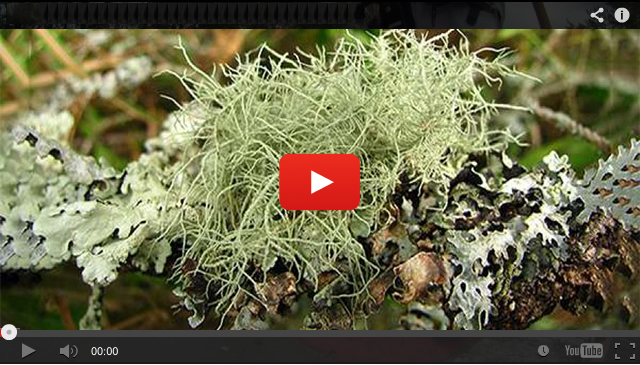

The idea of putting any ointment, butter, petroleum jelly or any other substance on a burn is incorrect and will increase the risk of infection. If applied to a burn before seeking medical treatment will result in the wound being scrubbed with a plastic scrub brush to remove the substance. I can assure there is no amount pain medication will take that kind of pain away, having personally done it a hundred times or so myself to patients. So leave the burn clean and only apply water or at most aleo vera sap.